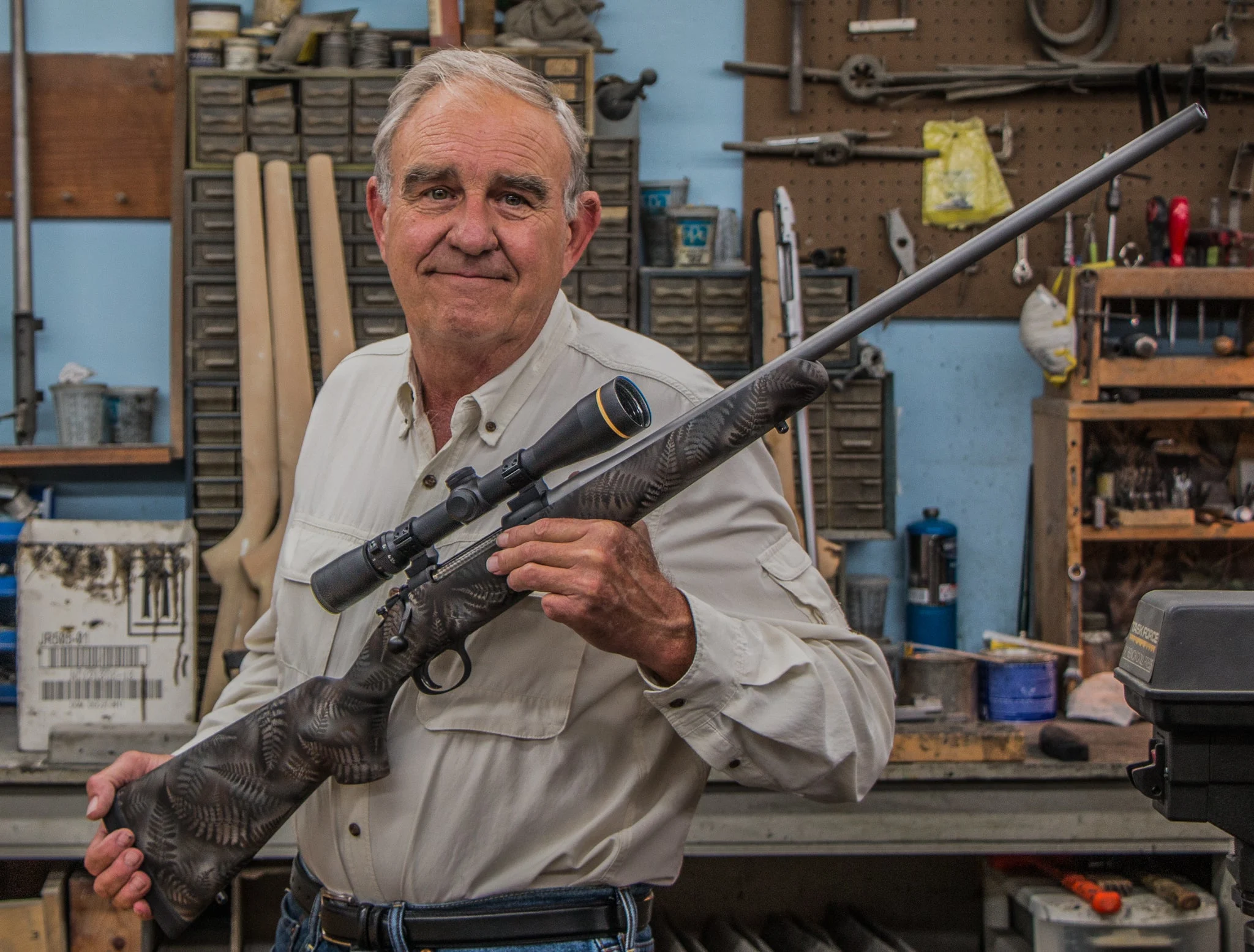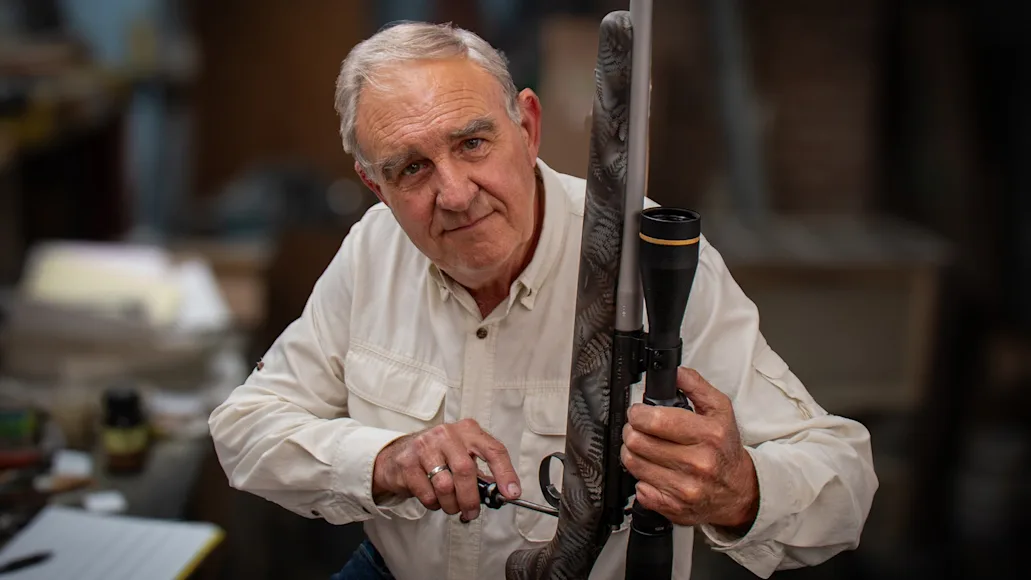_We may earn revenue from the products available on this page and participate in affiliate programs. Learn more ›
_
Rifles have changed more in the last quarter century than they have in the preceding century and a quarter, and one of the men most responsible passed away at his home in West Virginia on June 5. I got to know Melvin Forbes in 1985 when he was starting Ultra Light Arms (later, New Ultra Light Arms), and he invited me to hunt groundhogs with him. I did this for most summers for 20 years, and we added whitetails to the annual list in 1986.
It took me a while to figure out just how smart Melvin was. He dressed like a West Virginian, and spoke like one, meaning he was not out to impress the world with how many IQ points he was carrying around. But what he was able to do was look at hunting rifles in a way that no one had before and see what really was needed, and what was not. His understanding of how things worked was uncanny.
In 1983, Melvin was working as a country gunsmith when a customer of his ran out of wind while hunting in Montana and had to hang his rifle in a tree in order to make it down off the mountain. “Build me a light rifle,” he told Melvin when he got home, and Melvin did just that. He started by looking hard at a Remington Model 600 carbine, and he saw that there was a lot of wood and metal that you didn’t really need if you built the gun correctly. He decided that the person who should build such a rifle was him.
He quit gunsmithing, took a job as a high-school teacher for the steady paycheck, and started weighing and measuring rifle parts, and deducting ounces and fractions of ounces. He saw that much of the answer lay in discarding wood stocks, and he engaged the help of two friends who worked in aerospace design, one an expert on high-strength fabrics, the other on adhesives (the String Man and the Glue Man, he called them).
What they created was a Kevlar/graphite stock that was not only an ergonomic marvel—Melvin asked his rifle-shooter friends to weigh in on what felt good—but weighed a single pound and was so strong you could run it over with a pickup and all you’d do is scratch the paint. For a trigger, he went to Timney, because their triggers work, and for barrels he went with the No. 1 contour barrel made by Douglas, which makes a damn good barrel and is a West Virginia company to boot. The result, depending on caliber, usually went under 6 pounds, this when 8 pounds was considered light.

Forbes felt that all of the rifles he built were his, and that his clients were only borrowing them. Richard Mann
Melvin used pillar bedding at a time when it was known mostly to benchrest shooters, and he fit everything together so that it just touched. The was no stress anywhere in an Ultra Light rifle. It was completely stable and would never go weird on you. Meilvin once sent me a rifle in 7mm Weatherby Magnum, and because I was nagging him nonstop to ship it, he forgot to install a rear bedding screw. I shot it, got 1.5-inch groups, which was respectable for the time, and then discovered what was missing. I called, he sent a screw, and the groups shrunk by half—but I could have used that gun as was and even with a vital part missing, it still would have done fine.
Melvin built about 2,000 rifles while he headed the company. I think he could describe every one of them, and name who bought it. He once picked up a 6.5 Swede he’d made for me years before, and said, “The people who send me money for these don’t know it, but they’re just renting them. They’re my guns. They’ll always be my guns.”
In May, 2022, Melvin sold New Ultra Light Arms to Wilson Combat, who is now building rifles that have some minor changes and are made on the highest of high-tech machinery, but they’re still NULAs. They still weigh under 6 pounds, and unless you’re a hell of a rifle shot, they’ll still group closer than you can hold them.
Melvin saw the world differently than you and I. He was once in a caribou camp where the stoves didn’t work worth a damn, and he asked the camp manager if he could take one apart and look at it. Yes, was the answer, so Melvin did, and he saw that there was a part in the burner that had no useful function, so he took it out and the stove worked fine. Then he fixed all the camp stoves.
Out of curiosity, because it was about as far from rifles as you could get, I once asked him if he could make me a Gibson Granada Flathead 5-string banjo just like Earl Scruggs played, and he thought about what would be involved for maybe ten seconds, and then said yes, he could do that. And I have no doubt that he could.
The worst thing he could say about anything was, “It ain’t right,” which meant, it doesn’t work or it was not done properly. You could see the horror on his face at the thought that people could build things that weren’t right.
What he built was right. It worked. In a century, people will still pick up his rifles and say, “This guy knew what he was doing.” You can’t give a man like Melvin a finer epitaph than that.


